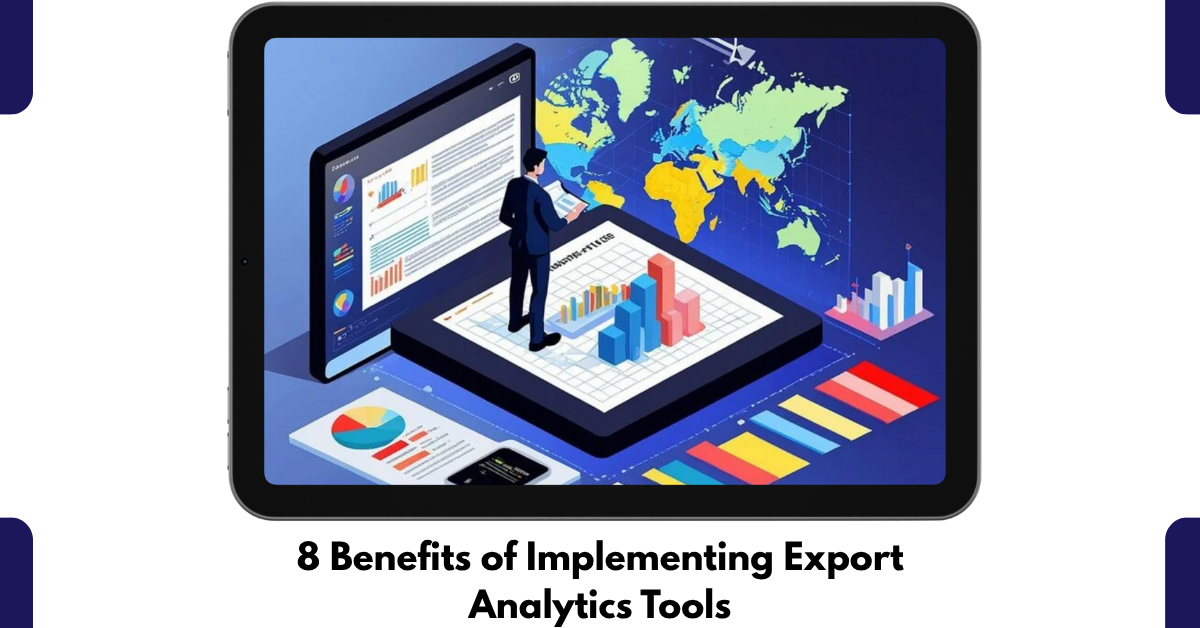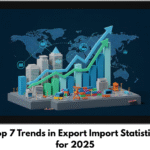In today’s hyperconnected global economy, data-driven trade intelligence has become the backbone of success for exporters, manufacturers, and logistics enterprises. As international trade grows more complex, understanding market dynamics, shipment trends, and competitor activities can no longer rely on guesswork. Businesses that embrace modern export analytics tools gain a strategic advantage — transforming raw trade data into actionable insights that fuel smarter decisions, reduce costs, and increase profitability.
Whether it’s analyzing export trends in Excel, comparing datasets on GitHub, or leveraging platforms like EXIMAPS and OSM Export Tool, the ability to process and interpret export data efficiently has become indispensable. Let’s explore how integrating export analytics tools can revolutionize global trade operations and ensure business growth in a volatile market.
The Power of Data in Global Trade
The global export landscape is evolving faster than ever. New trade agreements, tariff policies, and fluctuating currency rates have intensified competition across industries. In this environment, companies cannot afford to make uninformed decisions. Data accuracy, speed, and interpretation are now central to success.
This is where an export analytics tool steps in — acting as a powerful bridge between data and decision-making. By leveraging technology, businesses can uncover hidden opportunities, track market shifts, and optimize logistics. Tools such as the HOT export tool or the Export analytics tool Excel provide in-depth visibility into export patterns, helping organizations navigate complexity with precision.
The 8 Key Benefits of Implementing Export Analytics Tools
1. Enhanced Market Visibility
Implementing an export analytics tool allows businesses to see beyond conventional reports. Instead of analyzing limited spreadsheets, exporters can visualize trade flows, demand trends, and buyer patterns globally.
For instance, the Export analytics tool GitHub repository offers open-source datasets that help companies benchmark export performance and analyze competitor countries. This transparency enables exporters to target new regions and diversify their trade portfolio effectively.
2. Data-Driven Decision Making
Gone are the days of relying on assumptions. With the Export analytics tool Excel, businesses can structure complex export data into digestible, actionable insights. Whether it’s understanding price fluctuations, freight costs, or seasonal trends, these analytics platforms transform decision-making from reactive to proactive.
Executives can forecast sales, identify high-performing SKUs, and fine-tune supply chain strategies — all powered by real-time export intelligence.
3. Improved Efficiency and Time Savings
Manual data collection and analysis are prone to human error and inefficiency. Export analytics platforms automate repetitive tasks such as data import, validation, and visualization. With automation through the Export analytics tool download, companies can save hundreds of hours previously spent on manual reporting.
This improved efficiency allows teams to focus on strategic initiatives rather than mundane administrative work, creating a more agile export ecosystem.
4. Fraud Detection and Authenticity Verification
In an age where scams and misinformation circulate online, distinguishing between credible and fake trade data sources is essential. Many traders question, “Is The Dollar Business fake or real?” With analytical tools, exporters can verify data authenticity and detect inconsistencies in reported figures.
Reliable export analytics platforms provide access to verified customs data, minimizing the risk of fraudulent transactions and ensuring transparency across trade operations.
5. Competitive Benchmarking
Every exporter wants to understand their market position relative to competitors. Export analytics tools offer benchmarking capabilities that compare your performance against industry peers. For instance, through platforms like EXIMAPS, exporters can analyze shipping routes, top buyers, and product performance globally.
This comparative insight helps businesses identify competitive advantages and areas for improvement — essential for staying ahead in an increasingly data-driven world.
6. Smarter Supply Chain Optimization
Supply chain delays, inventory pile-ups, and logistical inefficiencies can erode profitability. With tools such as OSM Export Tool, exporters can map shipment timelines, track container movements, and predict disruptions before they occur.
This predictive capability helps organizations streamline supply chains, reduce lead times, and maintain better coordination with international partners — resulting in lower costs and improved customer satisfaction.
7. Accurate Forecasting and Risk Mitigation
One of the most critical benefits of using export analytics tools lies in their predictive capabilities. By analyzing historical trade patterns, demand cycles, and external market variables, these systems can forecast future performance with remarkable accuracy.
Companies using the HOT export tool or Export toons can simulate multiple trade scenarios, anticipate market volatility, and make data-backed contingency plans. This proactive approach minimizes risks and enhances financial stability across international markets.
8. Centralized Data Management and Reporting
Disorganized export data scattered across departments can hinder collaboration and insight generation. A centralized export analytics tool download enables seamless integration of all trade-related data — from shipment logs to invoice records — into one unified dashboard.
Managers can generate customized reports, analyze trends by product or destination, and share data-driven insights across teams with a single click. This consolidation fosters alignment, transparency, and accountability across all levels of an export-driven organization.
From Insight to Action – Transforming Exports with Data
Data without action holds no value. The true power of an export analytics tool lies in its ability to transform information into tangible outcomes. Businesses leveraging these tools witness significant improvements in operational agility, market adaptability, and revenue growth.
Companies using platforms like EXIMAPS or the Export analytics tool Excel report enhanced visibility into trade patterns and reduced costs in customs documentation and freight management. Moreover, open-source projects on Export analytics tool GitHub encourage collaboration among data scientists and exporters, resulting in innovative analytical solutions tailored for specific industries.
The Future of Trade Intelligence
As digital transformation continues to reshape global commerce, the integration of AI and machine learning into export analytics is the next frontier. Predictive algorithms will not only analyze trade data but also recommend optimal export routes, pricing strategies, and product positioning.
Emerging tools like OSM Export Tool and HOT export tool are already incorporating intelligent automation to enhance decision-making precision. Meanwhile, platforms such as EXIMAPS provide real-time trade data visualization — enabling exporters to respond to market fluctuations instantly.
The shift toward intelligent analytics ensures that businesses remain resilient, competitive, and future-ready in the unpredictable world of global trade.
Conclusion
Implementing an export analytics tool is not just a technological upgrade; it’s a strategic necessity for modern exporters. By merging data, analytics, and actionable insights, these tools empower organizations to make informed decisions, optimize operations, and expand their global footprint.
From the Export analytics tool GitHub to EXIMAPS, and from the OSM Export Tool to the HOT export tool, the options are abundant — each offering unique features to suit diverse business needs. Whether a company seeks improved efficiency, risk mitigation, or deeper market understanding, these platforms pave the way for smarter, data-driven export management.
Harnessing the potential of export analytics tools today means gaining the foresight to thrive tomorrow — transforming raw trade data into the most valuable export of all: intelligence.



